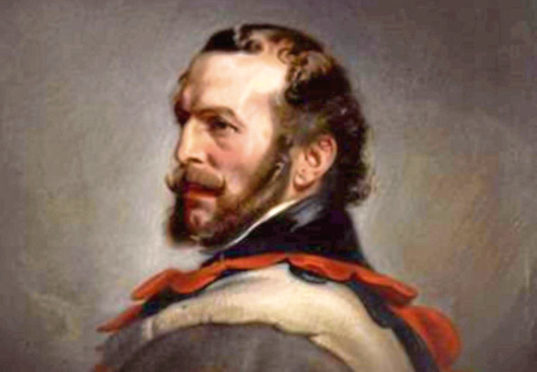I sit looking at the majestic hills of Hoy out of the window of our wooden Norwegian house. It is a wonderful view, and I am privileged to see it every day in life. I never tire of it.
When I walk with my white collie Mansie, I can see, further along the coast, a dilapidated building which was once one of the most handsome mansions in Orkney.
These two views are connected by history: you see, I live deep in John Rae territory.
John who? I’m glad you asked. His story needs to be told and told again. One of the truly great Arctic explorers, Rae was maligned by the British naval establishment in Victorian England.
One of the maligners-in-chief was the greatest English novelist of his day, no less a figure than Charles Dickens.
“It is evident that our wretched countrymen had been driven to the last dread alternative – cannibalism”
But this is to get ahead of ourselves. Let’s wind back to the beginning.
The dilapidated mansion, known as the Hall of Clestrain, was the home of John Rae senior, who was the Orkney agent of the famed Hudson’s Bay Company.
His son, John, was born in the Hall of Clestrain on September 30 1813. The lad lived his life in the outdoors hunting and fishing.
By the time he was 15 years old, he was a very accomplished seaman – so much so that he would challenge much more experienced voyagers to race him to Stromness harbour.
He would invariably win.
Let’s go back to the view from my window. More than 200 years ago it was in the waters separating the coast from the hills of Hoy that young John Rae honed his boating, fishing and hunting skills.
As a young man, he left Orkney to study medicine at Edinburgh University. Given his father’s occupation, it was no surprise when John signed up as a surgeon aboard the Hudson’s Bay Company ship, Prince of Wales, in 1833.
This decision would change his life, bring him fame, and ultimately bring him down.
Because of his skills and fortitude, he was commissioned to do exploration work. The British Admiralty chose him to discover the fate of Sir John Franklin who, with a crew of 128, disappeared in 1846 while trying to find the fabled North-West Passage, a sea route from the Atlantic to the Pacific round the top of North America.
The search for Franklin captivated Victorian England; but the news that John Rae brought back was not well received in London.
“From the mutilated state of many of the bodies and the contents of the kettles,” he reported, “it is evident that our wretched countrymen had been driven to the last dread alternative – cannibalism – as a means of prolonging existence.”
What was the undoing of one of the greatest explorers of his day? It was the fact that he had allowed himself to be taught by the native Cree Indians how do deal with Arctic winters. From them he learned to construct igloos rather than build stone houses, and to make snowshoes. He wore the same clothes as the Inuit. The Inuit also pointed him in the direction of the solution to the Franklin problem.
Despite the fact Rae was able to produce artefacts, including implements that had been used for the boiling of human flesh, he was vilified in the public prints. Lady Franklin, who had been friendly with John Rae’s mother – the pair had once drunk cherry brandy together in Stromness – was outraged.
Her friend Charles Dickens leaped to her rescue. He argued that the Inuit were lying.
“We believe every savage to be in his heart covetous, treacherous, and cruel,” he wrote, dismissing “the chatter of a gross handful of uncivilised people, with a domesticity of blood and blubber”.
The class-obsessed Admiralty supported Lady Franklin. They accused Rae of the crime of “going native”. It was a classic case of shooting the messenger. Rather than receiving the knighthood that was his due, John Rae was, in effect, airbrushed out of history.
Angered by this injustice, Orcadians had a statue of their local hero erected by public subscription and placed in St Magnus Cathedral.
In the 1980s and early 1990s, anthropologists recovered the permafrosted remains of some of Franklin’s men.
There was evidence that the bodies had been cut up and the flesh removed from the bones.
Thus was John Rae vindicated.
What makes me think about all this again was that this past weekend saw a gala event to mark Rae’s 205th birthday.
Orkney’s John Rae Society also celebrated the fact sufficient funds have now been raised to buy and protect the Hall of Clestrain.
>> Keep up to date with the latest news with The P&J newsletter
The redoubtable president, local potter Andrew Appleby who lives in the district of Harray – thus billing himself as “The Original Harray Potter” – said: “Every sum coming in has given our trustees hope and resolve to complete this major acquisition for Orkney, the world and the nation.”
Sitting at the window, I muse on the tendency of establishments to gang up on the bearers of awkward news – but also on the human spirit that resists their sense of entitlement.
I raise a glass to the awkward squad who insist upon the truth.
Cherry brandy is surely the need of the hour.

